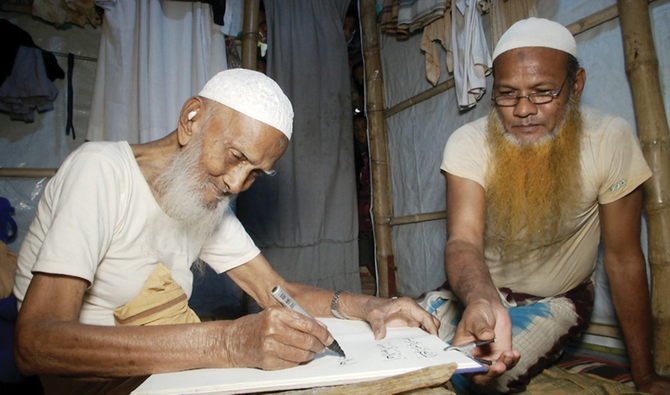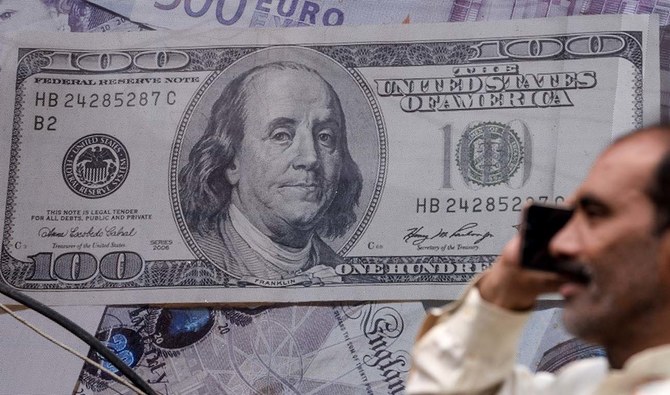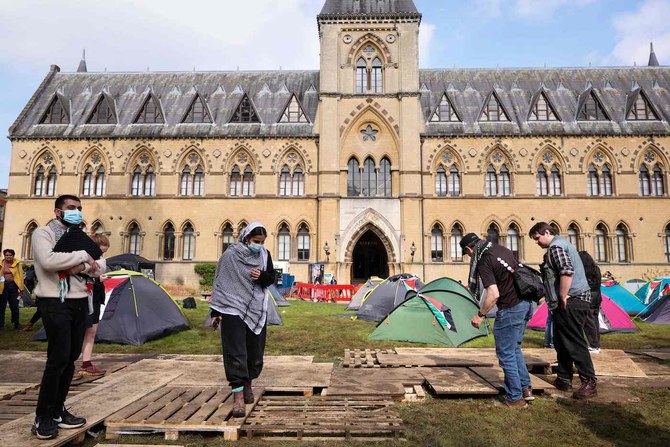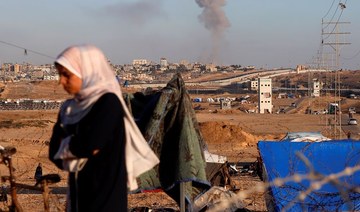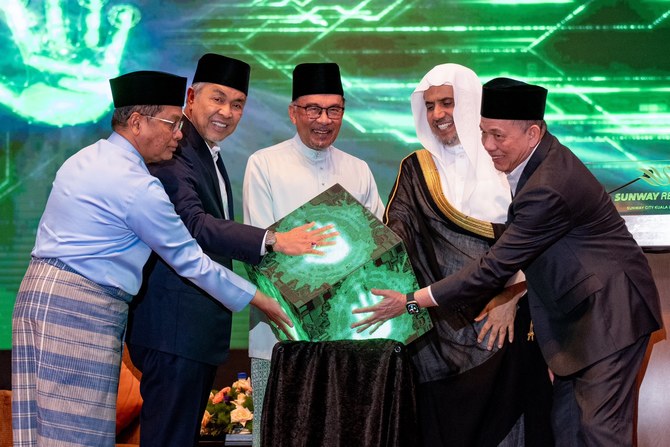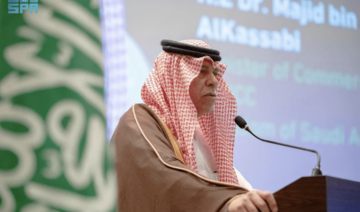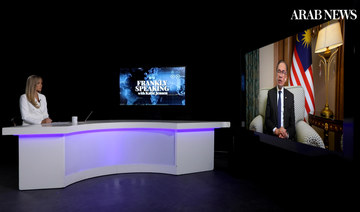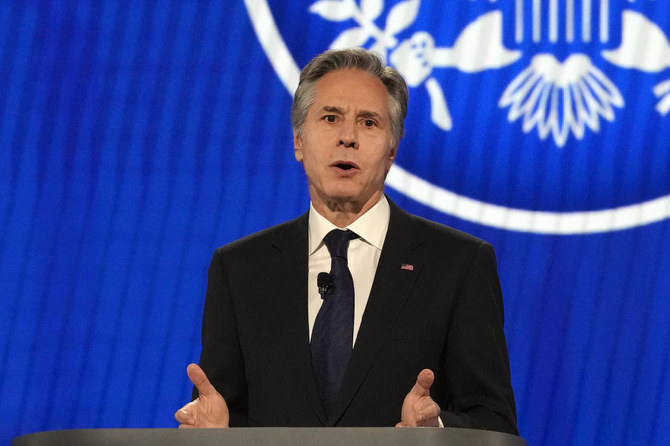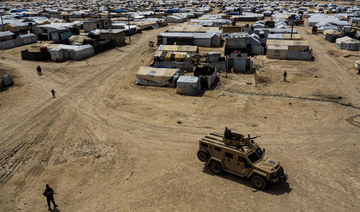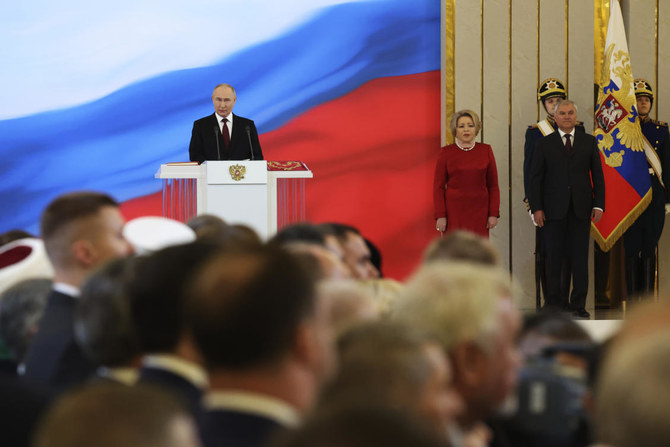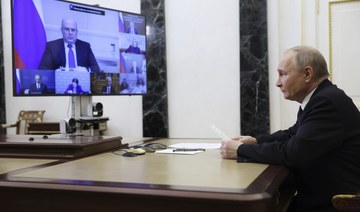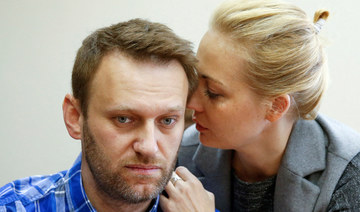DHAKA: Mohammad Ershad says he often struggles to recall the names of his four children, blaming it on his 108 years of age and his life as a Rohingya refugee in Cox’s Bazar District in Bangladesh.
However, the calligrapher says he can “never forget” the sequence of events on the fateful day of Aug. 28, 2017, after a brutal crackdown by Myanmar’s military forced hundreds of thousands to escape across the border to Bangladesh.
“I can still hear the gunshots. All of a sudden, the military began firing, and people were running all over the place,” Ershad told Arab News.
“I gathered my relatives and neighbors and told them to pick whatever valuables they had and to run from that place,” he added.
All he took was his book of calligraphy.
“It’s my most valuable possession. I couldn’t leave it behind,” he said.
Today, the Balukhali camp’s “living legend” — who’s known for his extraordinary skills in calligraphy —says he draws on his past to keep the Rohingya culture and traditions alive as an ode to his “life back home.”
“When I sit with my calligraphy notebook, it’s as if I’m transported back to my homeland,” Ershad said.
Despite the difficult conditions at the squalid camps, where thousands of Rohingya are cramped in makeshift shelters, Ershad says he “writes for an hour every day.” Most of his writing is on Islamic stories and Hadith (narrations of Prophet Muhammad (PBUH)).
“I start after Fajr (morning) prayer, and write the texts every day,” he said.
Ershad was born in 1912 in the Udangpara village of Myanmar’s Maungdaw District.
He studied to become a Muhaddith — an expert in narrating the Hadith — at the Darul Uloom Deoband University (DDU), a religious school in Uttar Pradesh, India.
Ershad said he couldn’t remember the year when he graduated from the DDU or moved from Myanmar to India but is “very certain” of how it all began.
“A religious cleric visited my neighborhood to deliver sermons. I was very moved by his speeches and the very next day, boarded a train from Myanmar to India,” he said.
Decades later, at the age of 50, he started reciting the Holy Quran for Myanmar’s national radio from 1962-65.
“I served the community for 70 years and taught at the Rengun Sufia and the Jamia Forkania madrassas (Islamic seminaries) as well,”
Ershad said.
Besides teaching, Ershad was also given the task of designing “hundreds of academic certificates for the madrassa students in Myanmar,” after the school authorities recognised his talent in calligraphy.
“But I have yet to write anything about my last day in Rakhine (the state in Myanmar where the Rohingya fled from). I have made notes of it in another book, in case I forget ... maybe I’ll write about it someday,” he said.
Now he hopes to pass on his skills to his children so that “at least one of them can carry forward my legacy.”
“My eldest son learned calligraphy from me, and I also taught my daughter, but I can’t recall her name at this moment,” he said with tears in his eyes.
Ershad is one of a few Rohingya artists, among the many thousands of refugees in the Cox’s Bazar camps, who use their creative expression to revive the community’s culture.
Bangladesh is hosting more than 1.1 million Rohingya who fled from persecution at the Myanmar military’s hands in the Buddhist-majority country.
The Rohingya endured decades of abuse and trauma in Myanmar, beginning in the 1970s when hundreds of thousands sought refuge in Bangladesh.
Between 1989 and 1991, an additional 250,000 fled when a military crackdown followed a popular uprising and Burma was renamed Myanmar. In 1992, Bangladesh and Myanmar agreed on a repatriation deal that led to thousands of Rohingya returning to Rakhine State.
The latest Rohingya exodus to Bangladesh resumed in August 2017 following a military crackdown on the ethnic minority group.
Recalling the trauma of past events, 60-year-old Qawali singer Bashirullah, a Rohingya refugee from the Balukhali camp, said his music was “an escape from reality.”
Bashirullah is a leading performer of the Tarana style of traditional music – where a singer creates impromptu lyrics based on a theme – for a genre that is still popular among the refugees at the camp.
Bashirullah was born in the Monglipara village of Maungdaw township and was fond of music from an early age.
“I learned the Tarana style of music from a mentor in my neighbourhood. We used to perform at marriage ceremonies in Myanmar and earned $60 – $120 from each event,” he said, but “never charged poor families.”
“Our topics would often be about happy moments from our daily life, such as a wedding, birth of a child and so on,” he added.
While today his songs are still about Myanmar, they are not “as happy” but “keep the memory of our homeland alive,” he said.
Bashirullah says he watched several of his friends and neighbours die during the August 2017 attack.
“I escaped by bribing the soldiers and, along with ten members of my family, came to Bangladesh,” he said, adding that none of his children is interested in music “unfortunately.”
When he’s not performing, Bashirullah teaches art and music at a Balukhali camp school and earns $200 from a monthly salary and relief aid provided by agencies.
“We are ok here, but I dream of returning home with dignity one day and continue singing there,” he said.
A yearning to return to Rakhine often features in the poems of 18-year-old Mohammad Sawyeddollah as well – a Rohingya youth who gained widespread recognition for his evocative expression of life as a refugee.
Unlike Ershad and Bashirullah, Sawyeddollah’s audience is not limited to Rohingya camps alone.
Instead, he shares his work on popular social media platforms, such as Facebook, after striking gold with his first poem “Refugee Life” in 2017.
“The poem was about our sorrows, agony and dreams. I didn’t expect much feedback when I uploaded it on Facebook. But the reaction was huge ... I think it touched a lot of people at the refugee camps,” said Sawyeddollah, who began writing at the age of 15.
He has penned “more than 30 poems” and paid for internet services when the Bangladeshi authorities temporarily blocked them.
Sawyeddollah says he now hopes for a better life ahead and to eventually move out of the refugee camp.
“All human beings should have three things – life, liberty and security. In the camp, we have our lives, but there is no liberty and security,” he said.



